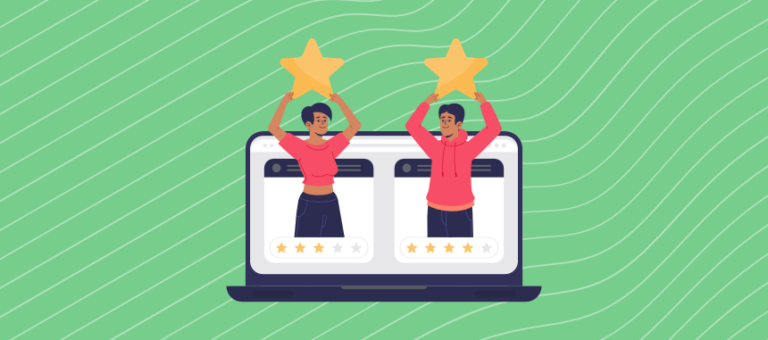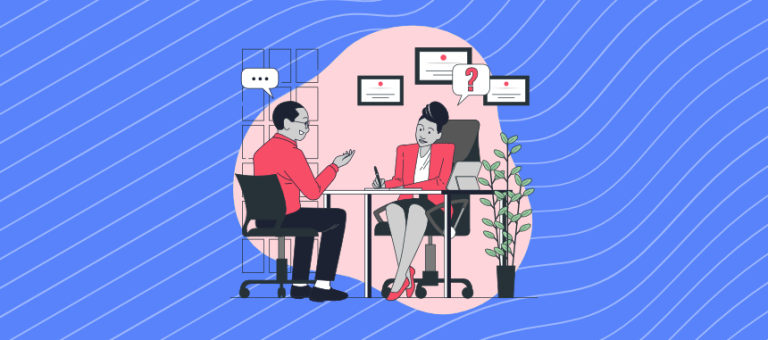What is customer experience?
The customer experience (CX) describes the relationship between a business and its customers across all customer touchpoints.
That relationship is determined by every interaction between the two; from website navigation to product/service delivery.
Great customer experience leads to repeat purchases, referrals and positive reviews. I.e. happy customers are the quickest and easiest way to building a successful brand.
What are customer touchpoints?
Customer touchpoints are points of customer interaction with your brand. These touchpoints can be results of both outbound and inbound campaigns.
Outbound touchpoints would include things like marketing emails and advertising, where inbound touchpoints include customer support and web pages.
Mapping out your customer touchpoints is crucial to forming successful CX strategies.
4 Pillars of customer experience
- Marketing
- Sales
- Product
- Customer support
1. Marketing
More often than not, your marketing outputs will form a lead’s first impression of you. Therefore, you should be continuously adapting your marketing strategy to meet customer needs.
It’s important to build an easily accessible web presence to increase your reach. At the same time, create content that establishes you as an authority in your industry. Share this content across multiple platforms to engage as many leads as possible and slowly build a trusted brand image.
This also applies to traditional (offline) outbound campaigns and advertising. In turn, this will increase word of mouth and the reputation of your organization.
2. Sales
Your sales team should be in harmony with your marketing department, where all information and metrics are shared. This is vital to providing a seamless experience for leads, without contradiction or misinformation.
A key aim of sales is to determine exactly what each lead needs to be converted, and you may need to take a personal approach.
The more you learn about customers, the more your sales team (and other departments) can optimize their customer experience strategy and the more value your products/ service provides.
3. Product
Product and service delivery is equally important as the impression and sales experience you provide. How you deliver these will be based on your customer expectations and your brand image.
For example, customers attending a cinema viewing will have drastically different expectations for quality and experience than those attending a Broadway show.
However, there are other factors that can affect customer experience.
Such as:
- Price
- Quality
- Delivery time
- Usage support
- Product life-cycle
- User experience (UX)
A poorly received product or service can undo all the good work you’ve done with sales and marketing. These experiences often translate into negative word of mouth and bad reviews, which can do long term damage to your brand.
4. Customer support
Your customer service team will interact with leads and customers more frequently than any other. Therefore, any queries or concerns must be addressed efficiently and effectively.
Live chat services are a great way of achieving this as responses to queries can be instantaneous. However, you should also provide support over social media platforms to increase your reach.
Support staff must be able to empathize with customers and translate products and services into benefits that meet their needs.
How to improve your CX strategy
- Take a customer-centric approach
- Collect feedback
- Reduce friction
1. Customer-centric culture
Putting customers at the center of everything you do is the first (and biggest) step you’ll take. This approach has to be top-down, where C-level employees understand that customer experience correlates with customer retention and an increased ROI.
It’s also important that customer feedback is shared with staff at all levels to encourage empathy. This will ensure that all outputs and tailored to customer wants and needs.
2. Collecting feedback
At the heart of good customer experience is feedback. The voice of the customer has never been more influential in developing businesses practices, and so you must reach out to them.
Collect feedback with surveys across all touchpoints, including customer service, product development and website design. This will highlight what you’re doing well and where improvements need to be made to reduce friction.
This strategy needs to be ongoing, where you collect feedback, analyze results and action findings.
3. Reducing friction
Frictions are anything that hinders customers progression through the sales funnel. Here are a few examples of customer frictions:
- Slow response to customer enquiries
- Poor customer service
- Misinformed customer service agents
- Confusing website architecture
- Slow page load times
- Readability of articles/ pages
- Hidden contact details
- Lack of reviews/ referrals
- Difficulty returning a product
- Lack of documentation for online services
- Poor layout/ lack of signage (physical stores)
It’s important to ask about these frictions in customer satisfaction surveys, or they could go unnoticed indefinitely.
How to measure customer experience
There are a few methods through which you can measure and gauge customer experience.
- Time to Resolution (TTR)
- Customer Satisfaction Score (CSAT)
- Customer Effort Score (CES)
- Net Promoter Score (NPS)
Most of the above methods incorporate direct feedback. But TRR can be measured without contacting your customers.
Time to resolution (TTR)
TTR is the average time it takes customer service representatives to resolve a ticket opened by a customer. The standard for these times can vary between industries, depending on the complexity of the average ticket.
You’d calculate TTR by adding up all times to resolution and dividing that by the number of resolved tickets. But most customer support platforms, such as HelpScout (which we use), will provide you with the relevant metrics.
Long wait times (for both an initial response and case resolution) is a major friction in the customer journey. Optimizing the time it takes to resolve tickets is paramount to creating a good customer experience.
Take a look at these tips on how to reduce time-to-resolution from Helpscout.
Customer satisfaction score (CSAT)
CSAT is a tool for measuring customer satisfaction at certain touchpoints. Typically, these surveys are conducted after a product or service has been purchased by a customer.
Then you would use a Likert scale question type to ask how satisfied they were with their purchase. Respondents would choose a rating between 1 and 5, where the two highest ratings (4 and 5) represent your satisfied customers.
The calculation is as follows:
(Number of satisfied customers/ total respondents) x 100 = % of satisfied customers.
Customer effort score (CES)
CES measures the ease of a customer’s experience. This method assumes that the less effort a customer has to make, the more satisfied they will be with the experience overall.
These types of surveys focus on removing any unnecessary friction in customer processes. For example, customers may feel it was too difficult to find your pricing page or that an order form had too many required fields.
It’s all about finding those little ways to improve your customer experience. In doing so, you’ll see an influx of positive reviews and a rise in customer loyalty.
Net promoter score (NPS)
NPS is a tool for measuring customer loyalty based on their likelihood to recommend your product, service or company to friends and colleagues.
The standard scale for NPS is from 0-10, where 0 is ‘Not at all Likely’ and 10 is ‘Extremely Likely’.
An overall score is produced by subtracting your percentage of Detractors (those who choose 0-6) from the percentage of Promoters (those who select 9-10).
See our article on how to calculate NPS for more.
Tips for conducting customer surveys to improve CX
1. Keep them short
Whittle your questions down to those that provide the richest feedback. Asking too many questions will lead to a low response rate or disengaged respondents.
2. Brand your surveys
Customize the colors, images and logos in your survey to align with your brand guidelines. This will ensure customer feedback remains focused on you.
3. Personalize content
Structure your survey so that customers only see questions relevant to their experience and personalize questions to keep them engaged.
4. Benchmark results
Monitor levels of customer satisfaction over time to identify what changes are successful and which aren’t. Then use this information to inform development.
5. Ensure it’s accessible to everyone
The most effective research takes a multi-mode approach to data collection. Your survey has to be responsive on all devices (mobiles, tablets and desktops) and accessible by other means, e.g. print/ QR code.
6. Don’t collect personal information
There’s no bigger deterrent to respondents than blatant attempts to collect their data. Only ask for what’s essential to your research goals and improving their experience.
7. Don’t survey too frequently
Asking for feedback too frequently will lead to survey fatigue. You have to consider how often other departments, and competitors are asking for feedback.
8. Map your customer journey
As we said above, it’s important to know when to send customer surveys. A good way to do this is to map out your customer journey and all the key touchpoints throughout it.
When and where you ask for feedback will then become clear. Of course, this can change over time, as the responses you collect may determine feedback at certain touchpoints is unnecessary.
9. Always act on feedback
Ensure that feedback is shared with all relevant departments and acted on. If this isn’t done, you’ll only receive the same data in the next survey. You’ll also need to keep track of the changes to make based on feedback.
By doing this, you maintain a retrospective on what changes improved customer experience and others which may not have been as effective.
Customer experience management should be at the center of your business strategy. Doing so will improve customers’ perception of your brand and increase loyalty and satisfaction. Which, in turn, will lead to increased revenue.
A study concerning experience-led businesses (run by Forrester) found that experience-driven businesses had a 4% higher revenue growth rate than non-experience driven businesses.




